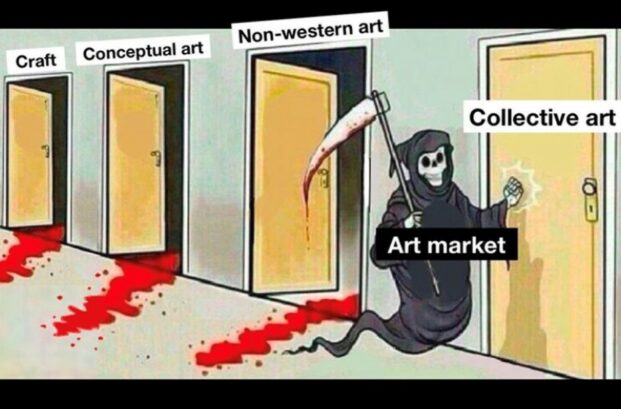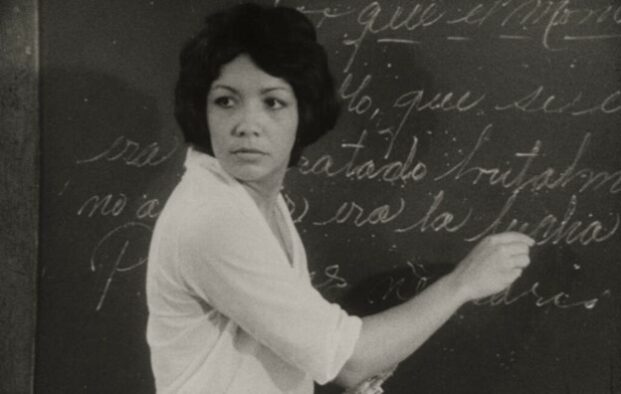Seventy years after Benjamin, the late curator Okwui Enwezor revived the theorist’s thinking in his own short talk. In “The Artist as Producer in Times of Crisis” (2004), Enwezor interpreted Benjamin’s reflection as asking, “to what degree does political awareness in a work of art become a tool for the deracination of the autonomy of the work and that of the author?” According to Enwezor, an artwork’s political stakes can distance it from its maker through what Benjamin termed “technique,” which, the latter claimed, would do away with “the sterile opposition between form and content” by resituating these elements of authorial intention in the political domain. Enwezor offered the technique of the collective as an alternative to that of the single author as one that “performs an operation of irruption and transformation on traditional mechanisms and activities of artistic production which locates the sole figure of the individual artist at the center of authorship.” Enwezor embraced the promise of collective practice (“shared labor; collaborative practice; the collective conceptualization of artistic work”) to destabilize both the singular author and their corresponding authority through a “critique of the reification of art and the commodification of the artist.”
While Enwezor’s comments speak to an ongoing foregrounding of collective work, collective practices’ challenges to traditional models of authorship and authority are tested today by dominant art world institutions. The recent documenta fifteen in Kassel, Germany, is one example. There, a citywide exhibition was for the first time organized by a working collective of artists, the Indonesia-based ruangrupa, and featured a variety of other art collectives and collaborative groups. Critics of documenta fifteen targeted what they claimed was a privileging of social process over product, while others attacked what was perceived by some as artists’ overstepping their bounds into the political sphere. In either case, the challenges to collective work were substantial, which perhaps demonstrates that it is performing the disruptive role that Enwezor described. At the same time, as their simultaneous acceptance by the contemporary art establishment demonstrates, collective processes cannot be expected to challenge authorial alienation alone.





